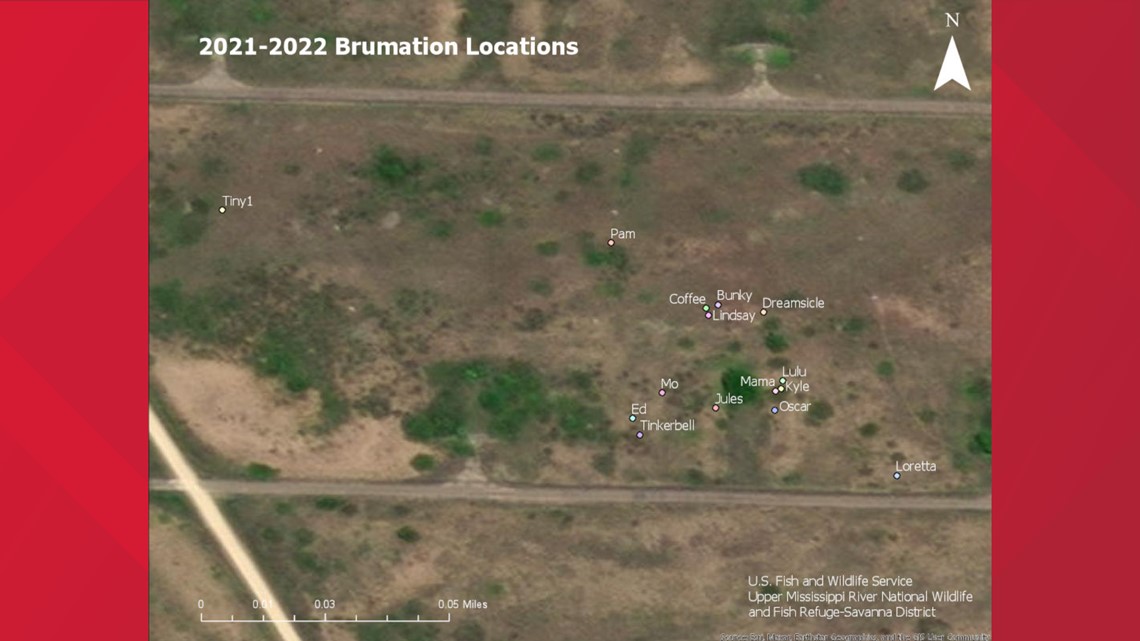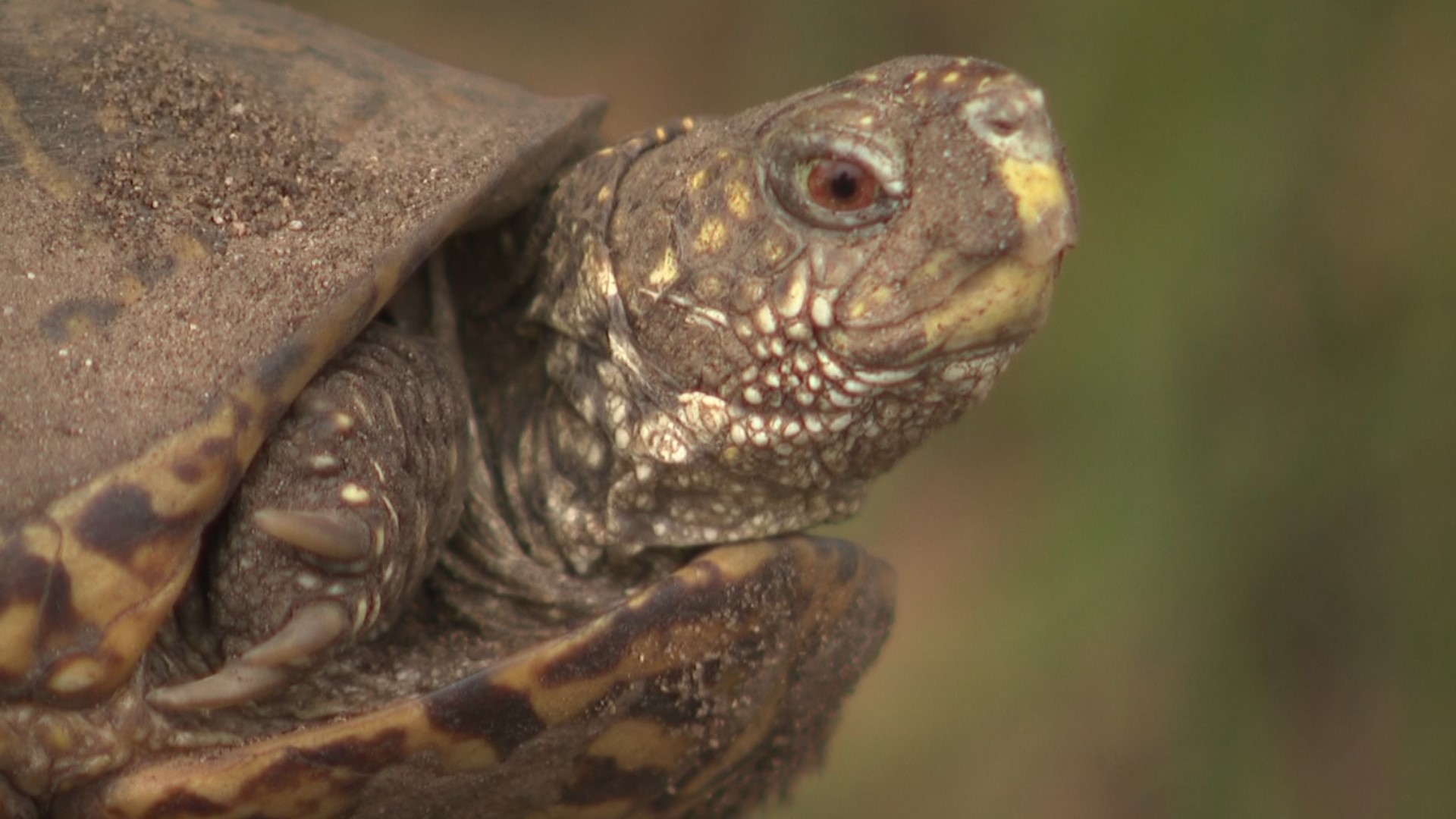SAVANNA, Ill. — In northern Illinois, a sunny spring day is the perfect opportunity for turtle hunting.
To spot the tiny reptiles, you'll have to be escorted through the old Savanna Army Depot. Past gated-off roads and through a field of old weapon bunkers, lies a 19-acre enclosure, built on a sand prairie.
There, a group of state threatened ornate box turtles are trying to make a comeback.
The "turtle resort" (of sorts) is run by their caretakers at the Upper Mississippi River National Wildlife and Fish Refuge. Researchers are trying to figure out how many reptiles roam the fenced-off region and study how well they're reproducing. All the while, a fence — which extends a foot below ground — helps keep predators out, and the little escape artists in.
At one time, ornate box turtles were found in half of Illinois' 102 counties. But today, researchers estimate the animals live in less than 10.
Where warm-blooded animals go into hibernate, cold-blooded beings go through brumation. Once winter hits, the turtles burrow into their brumation bunkers — typically a foot and a half below ground — to wait out the frigid weather.


Inside the enclosure, 15 turtles have radio transmitters on them, allowing researchers to track their habits and brumation sites.
To do so, researchers use an antenna in a 19-acre game of hot and cold. Biologists tune their radios to the frequency of the specific turtle they wish to find, then point the antenna and listen if the signal gets louder or softer in a specific direction.
Wildlife biologist Angela Dedrickson used this method to find a 21-year-old ornate box turtle named "Mama."
When we walked up, she had emerged from her brumation hole, crawled a few yards away, then burrowed back down up to her head, to escape the heat of the sun.
"They're state threatened and we don't want to lose populations, especially in an area such as this, which is their prime habitat," Dedrickson said.
Her job is to figure out how many turtles are in the enclosure, then figure out how well they're reproducing.
"Once we have answers to those questions, then the walls will be torn down and they'll be set free to go do what they need to do out in nature," Dedrickson said.
The reptiles were listed as state threatened back in 2009. One year later, the "turtle resort" was constructed. Between 2010 and 2016, biologists released 69 zoo-born turtles into the area.
Last year, the team of researchers were able to observe 32 turtles.
"But the estimate that I have, based on the information that I have, is around 80 turtles," Dedrickson said. "We need to have these populations healthy and productive because we don't want to lose these turtles."
Eventually, she hopes that won't be a worry anymore. But until then, turtles like Mama are content, relaxing in their turtle resort.

